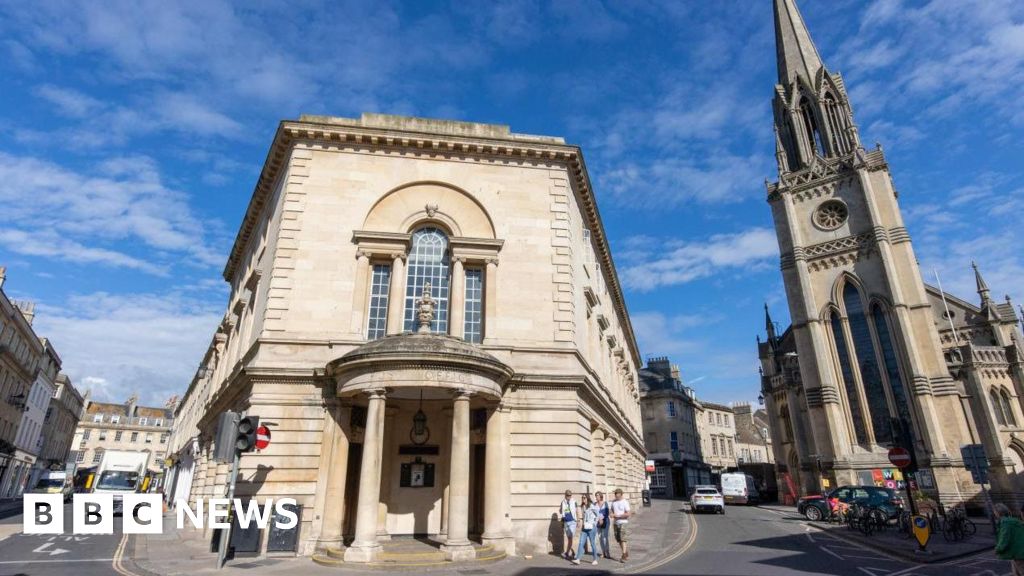- Middle East
Disasters spur investment in flood and fire risk tech
时间:2010-12-5 17:23:32 作者:Weather 来源:Markets 查看: 评论:0内容摘要:“I think I must have been to more than 10 or 15 of these forest gatherings,” Vallejo recalls. Other times, they met in churches. No records of these exist.“I think I must have been to more than 10 or 15 of these forest gatherings,” Vallejo recalls. Other times, they met in churches. No records of these exist.
Though the worshippers could interact with outsiders, locals say the children living there – some with their parents and others who neighbours said were taken in alone – never attended school, while members were barred from seeking medical care if they were sick.On the day of the police raid and rescue, many of the worshippers looked weak and ill, said Juma, who over the years befriended some young people whose parents belonged to the church. “They were sickly, as they were never allowed to go to the hospital or even take pain medication,” he said, quoting what his neighbours had told him. Auma believes those who were rescued that day were the sickly ones, as the others had escaped.

The 57 initially refused to leave the compound at all, insisting the church was their only “home”. But police took them to the nearby Rongo Sub-county Hospital to be treated. They again refused medical care and instead began singing Christian praise songs in the Dholuo language. Auma said the songs were chants asking God to save them and take them home to heaven.Disturbed by the commotion, health workers recommended that they be moved from the hospital because they were making other patients uncomfortable. That’s when they were taken into police custody. According to the assistant county commissioner, Josphat Kingoku, the worshippers were released from police custody two weeks ago, but he did not know their whereabouts.Seeking news about loved ones

In Kwoyo in Homa Bay County, Linet Achieng worries about her 71-year-old mother, who left home to join the Migori church 11 years ago and never returned.Her mother was introduced to the church by a neighbour who was originally from Migori, Achieng said.

“Initially, she had gone to seek healing from a backache that had troubled her for years,” said the 43-year-old, explaining that the church offered promises of health.
The family initially kept in touch with their mother, asking when she would come home after being healed. She kept making promises to return, but never did. Achieng tried to convince her mother to leave the place, she said, but her attempts were in vain.Avelo, which started the deportation flights in mid-May, defended the move in an April 3 letter to employees, saying its partnership with the Immigration and Customs Enforcement (ICE) agency is “too valuable not to pursue”.
Founded in 2021, the airline has been in financial turmoil and was projected to have only about $2m in cash on hand by June, the trade publication Airline Observer reported last month. An Avelo spokesperson told Al Jazeera that that reporting is outdated.The airline has not disclosed the terms of the deal with ICE but is said to be using three of its Boeing 737 aircraft for the flights. Avelo has 20 aircraft in its fleet.
At the beginning of 2024, Avelo reported its first profitable quarter since its founding but hasn’t released any financial results since then. Because it is not a publicly traded company, Avelo is not legally obligated to regularly disclose its financial status to the public.Avelo’s deal was brokered through a third-party contractor, CSI Aviation, which received $262.9m in federal contracts, mostly through ICE, for the 2025 fiscal year. While CSI Aviation did not confirm to Al Jazeera the specifics of its deal with Avelo, federal spending records show the company was awarded a new contract in March and received $97.5m in April when the Avelo flights were announced.
- 最近更新
- 2025-07-07 10:45:00Photos: A free clinic for donkeys, vital to Ethiopia’s economy
- 2025-07-07 10:45:00Services resume on Glasgow to London train line
- 2025-07-07 10:45:00Influencer shot live on TikTok: How rampant is femicide in Mexico?
- 2025-07-07 10:45:00Why are the number of flights reduced at Newark airport in the US?
- 2025-07-07 10:45:00WHO members adopt landmark pandemic agreement in US absence
- 2025-07-07 10:45:00How much has Elon Musk's Doge cut from US government spending?
- 2025-07-07 10:45:00Top Zimbabwe ambassador involved in gold smuggling scheme
- 2025-07-07 10:45:00Deadly mushroom cook weighed fatal dose on kitchen scales, says prosecutor
- 热门排行
- 2025-07-07 10:45:00"choosing my own adventure."
- 2025-07-07 10:45:00Casually brutal couple murdered grandson - court
- 2025-07-07 10:45:00Commission-free active trading and automated investing for 0.25% annual feeSoFi Invest
- 2025-07-07 10:45:00Tracking a smuggler behind deadly Atlantic migrant crossing
- 2025-07-07 10:45:00Large Room Air Purifier$45$100Save $55with coupon
- 2025-07-07 10:45:00High stakes as Poland heads to round two of presidential election
- 2025-07-07 10:45:00BAIMEI IcyMe Gua Sha & Jade Roller
- 2025-07-07 10:45:00UK backs Morocco's plan for disputed Western Sahara
- 友情链接
- UK weather forecast more accurate with Met Office supercomputer Meadows film a 'visual love letter' to Skegness Scarecrow festival to celebrate Yorkshire people Riverside Theatre set for final curtain call after 50 years Railway murals ask how men can stand up for women India's Banu Mushtaq makes history with International Booker win Bafta win a 'great way to say farewell' to Nessa British man claims record-breaking fastest run across Australia King Charles and Queen Camilla welcomed in Ottawa amid US tensions Artists asked to design homelessness charity mural Former aide of Georgia's most powerful man claims he was abducted abroad Glacier collapse buries most of Swiss village Our church inspired Sunset Song - we want to save it How 'laughing gas' became a deadly - but legal - American addiction Father-of-three charged over Liverpool parade crash Winemakers finding Trump's tariffs hard to swallow Kangaroo 'tries to drown' man in Australian floodwaters 'I didn't know my hoarding was a mental illness' What's next for social media? Man charged over killing of Jordanian pilot burned alive by IS Misleading posts obtaining millions of views on X Pride fringe festival returns with a roller-disco Writers plan to turn phone boxes into writing hubs How can traditional British TV survive the US streaming giants? Wychwood Festival 2025: What you need to know How political chaos helped forge South Korea's presidential frontrunner Ancient human fingerprint suggests Neanderthals made art US hikers reported a death. But they imagined it while high on mushrooms Radiology department marks 50 years of advancement 'I left one conflict zone to enter another': Harvard's Jewish foreign students on Trump row
